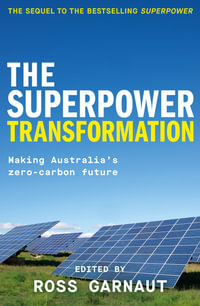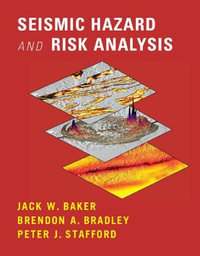| List of Figures and Tables | p. xv |
| List of Authors | p. xix |
| Preface | p. xxiii |
| Acknowledgments | p. xxv |
| Abbreviations | p. xxvii |
| The Importance of Carbon Capture and Geologic Sequestration in a Carbon Constrained World | p. 1 |
| Why does the World still need Fossil Fuel? | p. 5 |
| Carbon Capture with Geologic Sequestration (CCS) | p. 7 |
| Underground Injection Today | p. 9 |
| The Boundaries and Life Cycle of a CCS Project | p. 9 |
| The Reason for this Book | p. 11 |
| Technology for Carbon Capture and Geologic Sequestration | p. 12 |
| Overview of CO2 Capture Technology and its Applications | p. 13 |
| Capture of CO2 from Electric Power Generation | p. 15 |
| Capturing CO2 from Industrial Processes | p. 23 |
| Capturing CO2 Directly From the Air | p. 26 |
| Overview of CO2 Transport Options | p. 28 |
| Overview of Geologic Sequestration and the Sequestration Project Life Cycle | p. 31 |
| Practical Experience with GS Technology | p. 42 |
| Enhanced Oil Recovery and its Relationship to Geologic Sequestration | p. 42 |
| Siting CO2 Pipelines for Geologic Sequestration | p. 47 |
| Existing Federal Regulation of CO2 Pipelines | p. 48 |
| Existing Regulation of Siting, Rate Setting, Safety, and Access to CO2 Pipelines in Selected States (Texas, New Mexico, Ohio, and Pennsylvania) | p. 56 |
| Adequacy of Existing Laws | p. 59 |
| Options for Creating a CO2 Pipeline Regulatory Framework | p. 60 |
| Recommendations for Regulating CO2 Pipelines | p. 61 |
| Permitting Geologic Sequestration Sites | p. 63 |
| The US EPA Underground Injection Control Program | p. 64 |
| The Role of the States | p. 71 |
| Community Engagement During the Permitting Process | p. 77 |
| Recommendations for Permitting GS Sites | p. 78 |
| Learning from and Adapting to Changes in Geologic Sequestration Technology | p. 80 |
| Performance-based Regulation | p. 81 |
| Examples of Performance-based Regulation | p. 82 |
| Adaptive Regulation | p. 84 |
| Examples of Adaptive Regulation | p. 85 |
| Assessment of Current Rules for Geologic Sequestration | p. 87 |
| Recommendations on Learning and Adaptation | p. 88 |
| Access to Pore Space for Geologic Sequestration | p. 91 |
| Competing Uses of the Subsurface | p. 92 |
| Who Owns Pore Space in the US? | p. 95 |
| Does the Use of Pore Space for GS Require Compensation Under the Law? | p. 96 |
| Alternative Models for the Acquisition of the Right to Use Pore Space for Fluid Injection | p. 98 |
| Potential Legal Frameworks for Managing GS Access to Pore Space | p. 104 |
| A Federally Coordinated Framework would be Optimal | p. 105 |
| Authority to Permit Geologic CO2 Sequestration on Federal Lands | p. 117 |
| Recommendations on Access to Pore Space | p. 119 |
| Liability and the Management of Long-term Stewardship | p. 126 |
| Liability Across a Project's Life Cycle | p. 126 |
| Designing a Strategy to Manage Long-term Stewardship | p. 127 |
| Types of Liability that may arise During Long-term Stewardship | p. 128 |
| A Hybrid Approach to Liability During Long-term Stewardship | p. 130 |
| First-mover Projects | p. 132 |
| Recommendations on How to Address Liability and Long-term Stewardship | p. 133 |
| Greenhouse Gas Accounting for CCS | p. 140 |
| Framing the Issues in Accounting | p. 143 |
| Current Rules Relevant to GHG Accounting for CCS | p. 145 |
| Technical Considerations for Monitoring and Measurement of Surface Leakage at GS Sites | p. 147 |
| Compensating for Surface Leakage | p. 154 |
| CCS Accounting under Various Climate or Energy Policies | p. 156 |
| Recommendations on GHG Accounting for CCS | p. 162 |
| Making CCS a Reality | p. 166 |
| Opportunities to Mitigate Financial Risks | p. 167 |
| Fostering Technology Innovation | p. 179 |
| Summary | p. 181 |
| Conclusions and Recommendations | p. 182 |
| Appendix: A Draft Bill for U.S. Congress | p. 189 |
| Notes | p. 242 |
| Index | p. 271 |
| Table of Contents provided by Ingram. All Rights Reserved. |
























